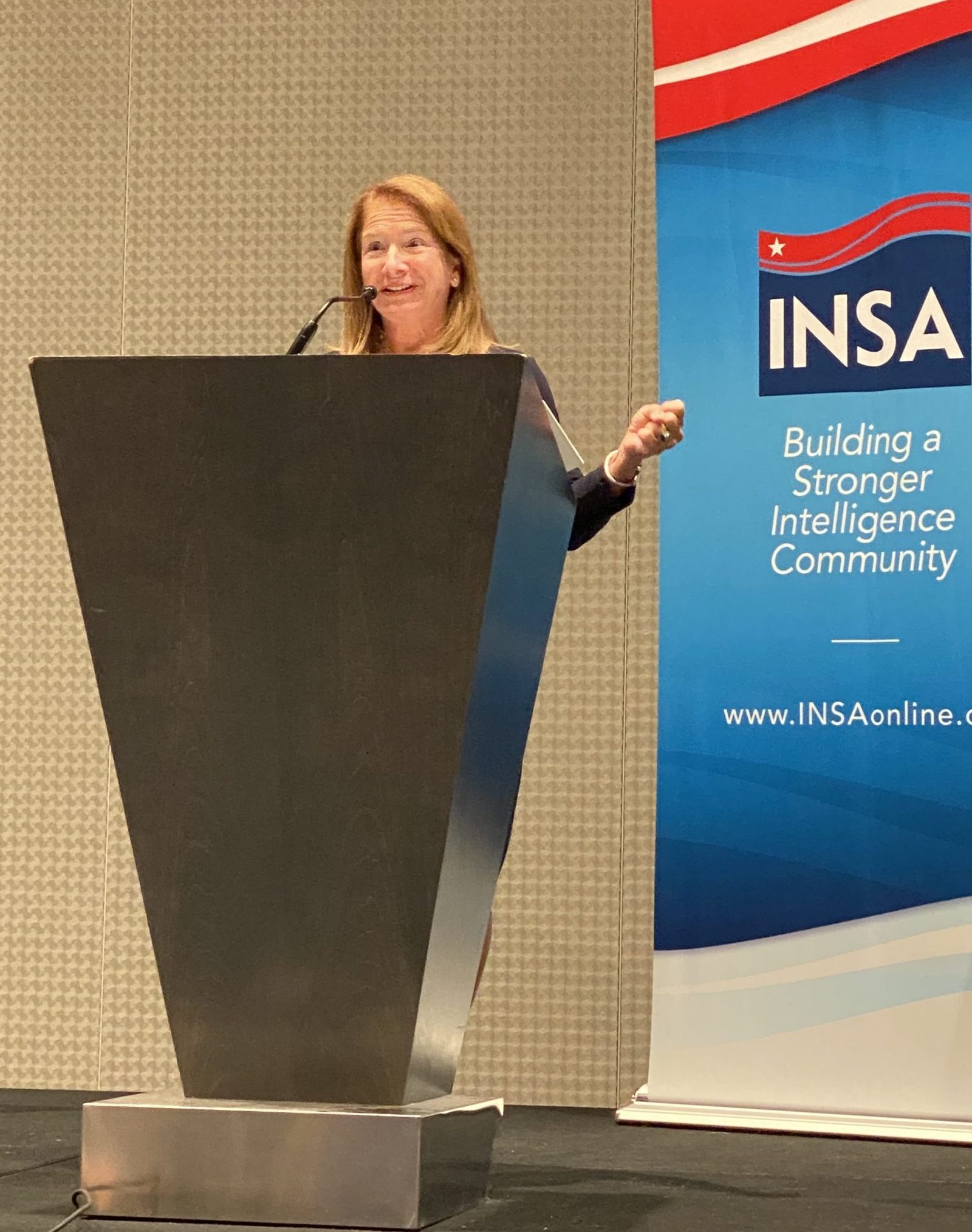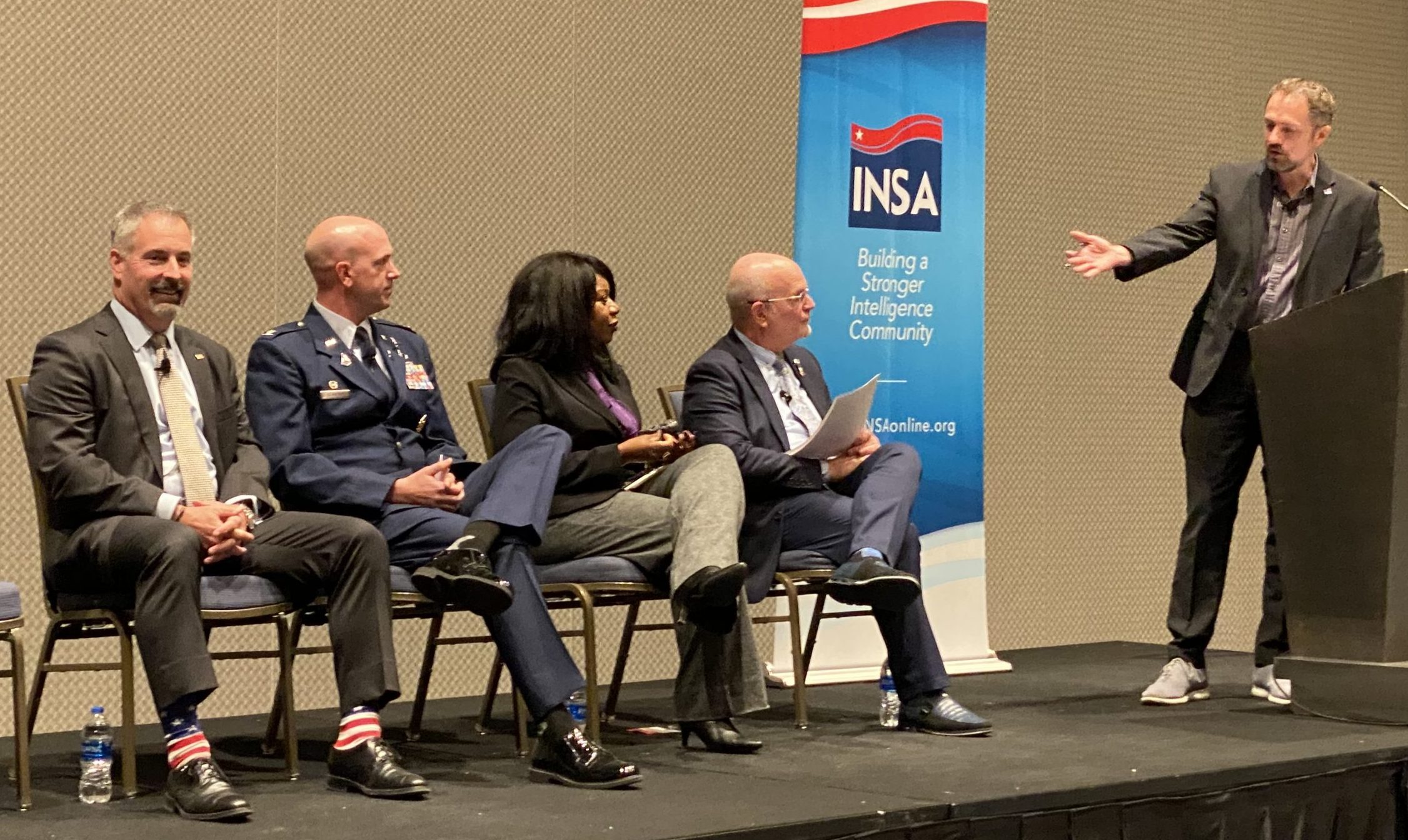INSA Travels to Aurora, Colorado!

INSA Chair Tish Long kicked off the program with keynote remarks touching on the changes since INSA’s last visit to the Denver area in Fall 2019, thanks principally to the pandemic, the establishment of the U.S. Space Force, and the growing importance of the space domain. She highlighted the Intelligence Community’s greater emphasis on commercial satellite capabilities, noting NGA’s recent announcement that it will leverage commercial data before utilizing government assets, NGA and NRO agreements to acquire commercial SAR and RF data, and a Commercial Space Council initiative to integrate commercial capabilities into intelligence agencies’ collection and analysis.
While space-based capabilities are critical for national security, Ms. Long also emphasized the important role that space assets play in the U.S. economy. As a result, commercial and government organizations must work to enhance the resiliency of space-based assets from both physical and cyber threats. Such work requires investment in both government industry technical skills through programs such as the Space Force’s new University Partnership Program, which encourages students to develop engineering, scientific, and technological skills needed by the space sector.
Space capabilities have become so critical to both national and economic security, Ms. Long stated, that support is building for designation of the space sector as critical infrastructure, a measure that could enhance public-private collaboration and information-sharing regarding threats and vulnerabilities that could undermine space resiliency. INSA plans to endorse such a step in a forthcoming paper developed by its Cyber Council.
Ms. Long praised intelligence agencies for adapting to pandemic restrictions on on-site work, noting that the shift to unclassified tasks aided recruitment and retention, drove innovative system development solutions, and promoted greater use of open source information.
Panel Discussion
The chiefs of NSA, NGA, and NRO Colorado operations, as well as executives from Peraton and Guidehouse, highlighted a number of issues that Colorado-area intelligence organizations grappled with as they adapted operations during the pandemic.
- IT improvements have been critical. Investments in unclassified technology enabled flexibility and adaptability during the pandemic.
- Given the escalation in sophisticated attacks on both government and commercial networks, cybersecurity missions have been elevated to a much greater level of importance across the IC.
- The IC has expanded public-private partnerships, which have been facilitated by a greater ability to work at the unclassified level. NSA’s Cybersecurity Collaboration Center (CCC), which opened in December 2020 to partner more closely with the private sector, has been a prime example of this trend.
- Interagency collaboration and clear communications are critical. ADF-C, a hub for IC integration, involves more than 4,000 people in three agencies, six Services, and four Five Eyes partners.
- The IC’s decision to maximize use of commercial imagery has been a gradual, but swift, development that will enhance geospatial intelligence capabilities and impacts. Commercial GEOINT has the potential to fill gaps in national technical means (NTM) collection, tip and cue classified collection, and facilitate intelligence sharing with foreign partners. NGA’s Moonshot initiative, in particular, will promote the exploitation of commercial GEOINT at speed and with precision to fulfill IC requirements.
Panelists also identified several leadership challenges that have emerged over the past 12-18 months.
- Speakers identified the need to empower the workforce, in part by facilitating interagency collaboration at ADF-C.
- Agency officials noted the need to shift workforce focus to great power competition rather than warfighter support, which has been a principal mission for the roughly large number of IC employees who joined the government after the September 11 attacks.
- Speakers emphasized the importance of making diversity, equity, inclusion, and accessibility (DEIA) an organizational priority. Leaders and managers need to be intentional about their efforts to consider DEIA issues, enhance employees’ internal networks, and keep the workforce engaged.
- Speakers noted a few agency-specific points regarding DEIA:
- NRO has only had its own cadre since 2016, so it can now direct recruitment and culture-building promote DEIA
- NGA has fostered internal communication fora about DEIA; has also created neurodiversity recruiting program that has brought interns on full-time
- USSF is a new, small service with people competing to get in; the Service is in an ideal position to incorporate DEIA objectives into its career planning from the outset
Government and industry panelists discussed the government’s need to communicate more effectively with its industry partners.
- Suggestions included more forums, especially using videoconferencing tools, to reach a wider audience across industry; more frequent engagements with industry partners to clarify mission requirements; and greater institutionalized engagement with private sector partners through entities like NSA’s Cybersecurity Collaboration Center (CCC).
Thank you to our Sponsors!

Thank you to our Supporting Partners!



